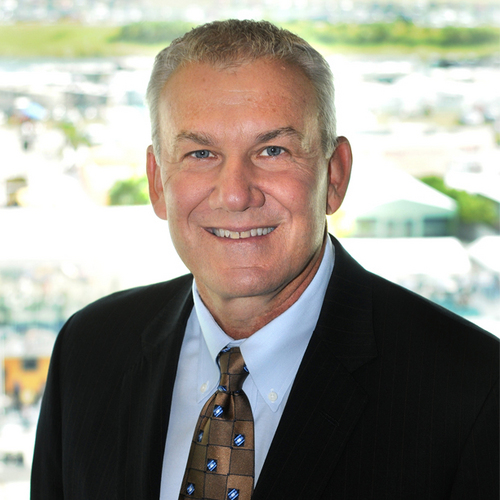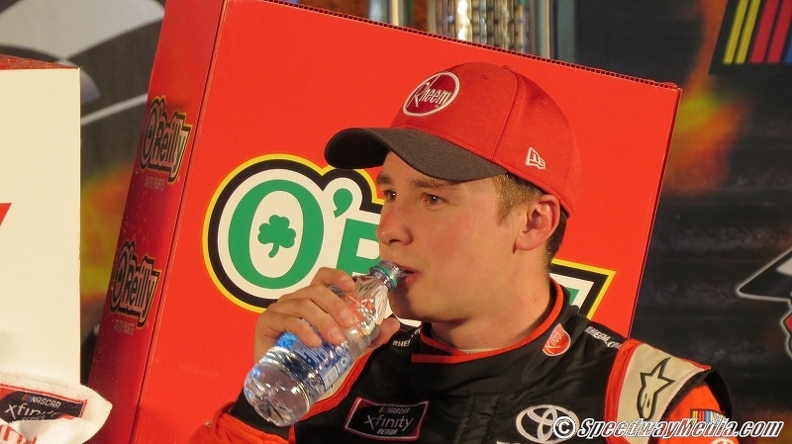We’re one month removed from the end of the 2019 NASCAR season, which means we’re enmeshed in the holiday routine race fans across the world are taking part in. This includes but is not limited to excessive eating, family visits, excessive viewings of Days of Thunder, Talladega Nights, Redline 7000, Driven, Rush, Grand Prix, et cetera, excessive podcast listening of everything from the Dale Jr. Download to Off-Track with Hinch and Rossi. So on and so forth.
But the holiday season is also a time to reminisce, and what better things for race fans to reminisce about than the first major race event they ever attended? Very few of us can remember the first race we saw on TV that got us hooked (For me it was the 1999 Exide NASCAR Select Batteries 400 at Richmond…otherwise known as Tony Stewart’s first Cup win). But we all remember that first time waiting in line to get tickets and entering the tunnel on the way to find a seat and take in our first green flag. In my case, it was the 2001 Harrah’s 500 at Texas Motor Speedway.
Those of us who remember the 2001 season remember the tagline networks used in reference to it: 2001: A Race Odyssey. In many ways, by the seventh race of the Winston Cup season we were facing a season’s worth of surprises: The loss of Dale Earnhardt. Three first-time winners in the first six races including Michael Waltrip and Earnhardt’s rookie replacement Kevin Harvick. Dale Earnhardt Jr.’s slump following his Daytona 500 runner-up finish.
With that said, many believed that things would turn around for Junior at Texas, given it was the site of his first Cup win the year before. He was due for a good run, as his Dale Earnhardt Inc. teammates Waltrip and Steve Park had won the first two races of the season. In qualifying, he added fuel to the fire by putting his red No. 8 Chevy on the pole for Sunday’s race.
Meanwhile, Winston Cup points leader Dale Jarrett had turned a DNF at Daytona into two poles, three top-fives, and four top-10s including a win at Darlington coming into the race weekend. He put his No. 88 Robert Yates Racing Ford into the third-place qualifying slot for Sunday’s event. Meanwhile Park was also coming into the weekend fourth in points, with a win, two top-fives, and four top-10s. He’d put his No. 1 Pennzoil Chevy fifth on the grid for Sunday’s race.

When the green flag dropped, Junior immediately took charge of the event as expected, before the race was slowed for a multi-car accident on lap five that involved rookie Kurt Busch, Waltrip, rookie Ron Hornaday, Jimmy Spencer, and Buckshot Jones. From my vantage point in the infield, all I saw coming back around the track were the heavily damaged cars of Waltrip, Spencer, and Jones, while the others weren’t as heavily damaged. It wasn’t enough for them to fall out of the race, as every driver who went to the garage returned to the track.
When the race restarted Junior continued to lead before Jarrett took the point, and over the first 100 laps of the race the lead was exchanged between those two as well as Johnny Benson before outside pole-sitter Bobby Labonte took the lead for two laps. They would be the only two laps he would lead before we saw his green No. 18 Pontiac slowly putter by on the apron on lap 150 when his engine expired.
By this point Park had taken the lead on lap 142 and had a stronghold on it. In his first venture with the front he would lead the next 48 laps before Junior would retake the lead on lap 190 and would hold onto it until lap 208. Around this time a caution would come out for a backstretch tangle involving Ward Burton, rookie Casey Atwood, and Joe Nemechek. Sterling Marlin would lead a few laps under caution before the restart, when Jarrett retook the lead.
This late in the race, it was looking like it’d come down to a battle between Jarrett, Park, Junior, and Benson, as all four happened to have the strongest cars in the race. Jarrett had had some strong runs at Texas at this point, holding two runner-up finishes at the speedway (1997, ’99) heading into the weekend. Meanwhile Park was in the midst of hitting his stride in Cup racing, in only his fourth full season in the No. 1 Chevy. Junior had the provenance of TMS being this site of his first Busch Series and Cup series wins, and Benson’s No. 10 Pontiac just so happened to have Hendrick Motorsports power under the hood, which seemed to be working just fine for his MB2 Motorsports team.
When Junior wrestled the lead from Jarrett on lap 275 and held onto it on a lap 285 restart following a caution where we saw Marlin’s No. 40 Dodge back into the turn three wall, we knew at that point a win for the DEI camp was certain, and Junior’s slump would be over. But when Elliott Sadler’s No. 21 bounced off the turn one wall and brought out a caution, on the lap 314 restart Benson stole the lead and held on tight.
But just like the ending of the 2000 Daytona 500, we saw as Benson was chased relentlessly by Jarrett. Park was close behind, while Junior’s No. 8 was shuffled back into the field. With six laps to go, the inevitable happened when Jarrett and Park finally stole past Benson, and when the checkered flag dropped Jarrett became the first repeat winner of the season. Park finished second, while Benson finished third and Busch finished fourth. Jeff Gordon rounded out the top-five.
Dave Blaney had an admirable day, meanwhile, turning a last-place starting spot to a sixth-place finish for his Bill Davis Racing Dodge. Harvick would finish seventh, and Junior would finish eighth after leading 107 laps on the day. Mark Martin would finish ninth, while Benson’s MB2 teammate would round out the top-10.
The race saw 18 lead changes among seven drivers, while the race was slowed 10 times for 44 laps. Jarrett would go on to finish fifth in points after winning two more times, while Park would be sidelined in the fall following a violent crash at Darlington. Benson would finish the season 11th in points, scoring six top-fives and 14 top-10s before scoring his only Cup win the next fall at Rockingham. Gordon would go on to win the championship later that year, while Busch would score his first Cup championship three years later.
As for Junior, 2001 would prove to be the season where he became a legend in his own right. He would win three times, starting with an emotional win at Daytona in July, and would follow it up with huge wins at Dover and Talladega before finishing eighth in the final standings, a huge improvement over his rookie season the year before.
As of this writing, only two drivers from that race are still racing full-time (Harvick, Busch).

Meanwhile, this race became the turning point for me as a fan. It probably helped that I was only 12, because while some of the more experienced fans/pundits would call this an average race for Texas, for me it became a watershed moment. It was everything I needed as a fan: Eventful, loud, fast. I saw drivers in person I’d never expected to encounter. I saw things in a perspective I never knew existed.
In the years since, I’ve been fortunate enough to cover multiple events at Texas thanks to the folks here at SpeedwayMedia.com, and I’ve been fortunate enough to meet several drivers and dignitaries across the world of motorsport from NASCAR to Formula One. How different would things have been had I not attended that race in April of 2001?
Would my love for NASCAR had gone the way most things do in regards to young pre-teens? I was the only NASCAR fan in my family at the time, and there’s no telling if my fandom would have intensified or not. But what I do know is that when it comes to professional sporting events, from NASCAR to Major League Baseball (Go Braves!), there’s no better way to intensify a young fan’s love for the sport. It can only grow from there.
So kudos to NASCAR and to the staff at the Texas Motor Speedway, because on April 1, 2001, they undoubtedly played a vital part in my love for motorsport. So on that note, I have to ask you a question:
What was your first race like?







